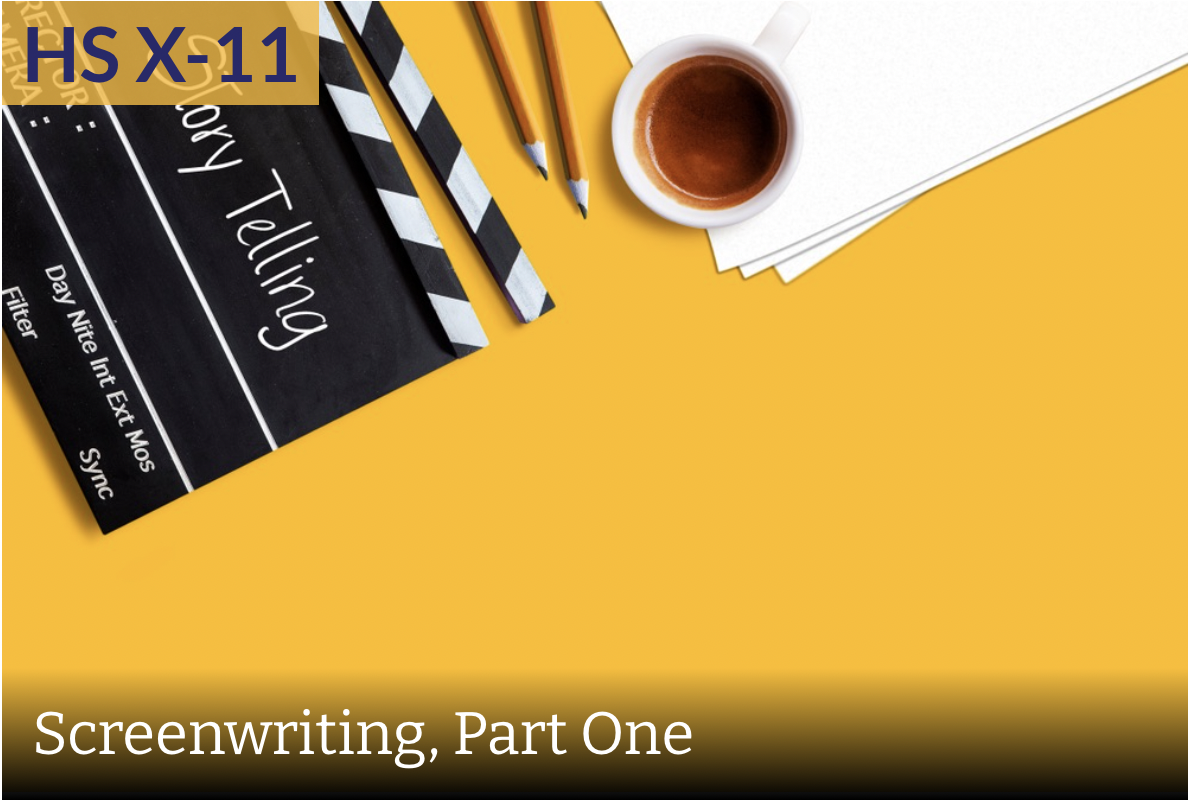
In this hands-on writing course, practice your advanced writing skills and learn how to design stories for film—including how to build characters, write dialogue, learn what makes a good movie, and craft scenes that make sense and engage the viewer. This course is for all writers who want advanced writing skills -- especially for those who want to explore writing as a part- or full-time career.
Currently, Instructor Access grading services are not available for this course.

NOTICE: This is an older course recorded with Adobe Connect and/or Vimeo recordings. We are currently working to replace the recordings with new Zoom recordings. Please don't hesitate to email us at homeschoolconnections@gmail.com with any questions.
|
How to Get the Most Out of Fiction Writing: Screenwriting, Part One with Erin M. Brown (AKA Erin Brown Conroy/E.B. Conroy):
|
For students who want to excel in fiction writing skills and jumpstart college literature courses; this is both a college and career preparatory course.
Sign up for Screenwriting Parts One and Two together, to complete the requisite book; the course is complete with both semesters.
Total Classes: 8
Prerequisite: A thirst to create and a love of story in movies! No HSC course prerequisites. However, it is helpful to either have completed some of the fiction writing courses or to be in any of the fiction courses while taking the Screenwriting course. Your student will also need Word 2007 or later version or the ability to convert a document to a Word-compatible document.
Suggested Grade Level: 9th to 12th grade
Suggested Credit: 2/3 Screenwriting, Creative Writing, or English. For a full credit, keep writing daily and working on your craft & course project.
Instructor: Erin M.Brown (AKA Erin Brown Conroy / EB Conroy)
Course Description: In your Advanced Fiction Writing Introduction to Screenwriting course, you’ll learn all of the key foundations of screenwriting and creating scripts for movies. Find out what goes into designing stories for film, including how to craft excellent character development and create a powerful storyline. While learning and practicing the special skills of writing for film, you will read through screenplays; watch and analyze classic and current films; watch additional videos related to learning the craft; discuss the conventions of good movies; learn how to craft masterful dialogue; and craft your own scenes and screenplay.
IMPORTANT NOTE REGARDING SCRIPTS USED IN THIS COURSE: Some of the famous movies scripts that are used in this course as examples contain profanity. The course offers alternate scripts -- and a way to get to those scripts, via links to websites, to choose your own script. Please be informed and make decisions on readings based on this knowledge. Thank you.
Course Outline:
Class 1: Screenplay fundamentals-- What is a screenplay? How does a screenplay differ in story from other fiction?
Class 2: What is the format of a screenplay? (Foreword, Introduction)
Class 3: What is a logline? (Chapter One)
Class 4: Crafting loglines and reading scripts
Class 5: The Ten Genres of Film, Part 1 (Chapter Two)
Class 6: The Ten Genres of Film, Part 2 (Chapter Two)
Class 7: Archetypes and Film (Chapter Three)
Class 8: The Beat Sheet (Chapter Four)
Course Materials:
- Word 2007 or later version.
- Book 1: Save the Cat: The Last Book on Screenwriting that You’ll Ever Need, by Blake Snyder, ISBN-10: 1932907009, ISBN-13: 978-1932907001 (http://amzn.to/2GwDM3n or bookfinder.com)
- Book 2: The Writer’s Journey: Mythic Structures for Writers, 3rd Edition, by Christopher Vogler and Michele Montez, ISBN-13: 978-1932907360, ISBN-10: 193290736X (http://amzn.to/2DzkE1W or bookfinder.com).
NOTE: The same book is used in both of the Screenwriting (Parts One and Two) courses.
Homework: Approximately two to four hours per week of reading and completing coursework depending on your skills level coming into the course. If you sign up for Instructor Access, all homework will be graded with detailed feedback from the Instructor.
- Teacher: E B Conroy
- Teacher: Bonnie Donlon
- Teacher: Aubrey Heki
- Teacher: Doug Hughes
- Teacher: Sharon Weis